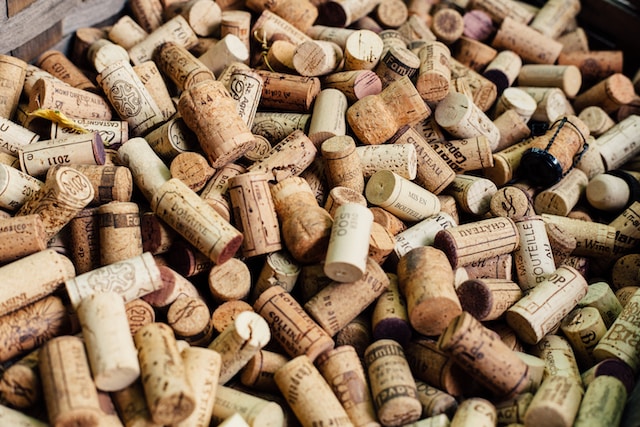Are Screw Cap Wines Bad? Debunking Myths and Twisting Open a New (Wine) World

Ah, the humble screw cap. Sometimes seen as the bane of a fancy dinner party, the enemy of the dramatic cork pop, and the silent assassin of romantic candlelit dinners. But wait! Before you relegate all screw-capped bottles to the “meh” pile, let’s uncork (or should I say, untwist) some juicy truths about this modern marvel. After all, it’s one of the most common questions around wine in recent times, are screw cap wines bad?
Introduction to Screw Cap Wine: Exploring the Basics
Picture this: You’re browsing the wine aisle, faced with a sea of bottles. Corks stare back at you, promising tradition and a satisfying “pop.” Then, nestled amongst them, sits a bottle with a… gasp… screw cap. Fear not, intrepid wine explorer! Screw caps, also known as Stelvin® closures, are not the villains of the vine. They’re simply another way to keep your vino safe and sound until you’re ready to twist and sip.
History of Wine Sealing: Corks to Screw Caps
For centuries, cork reigned supreme as the wine world’s closure of choice. But like any good story, there’s always a plot twist. In the 18th century, the humble screw cap emerged, initially used for spirits and sparkling wines. It wasn’t until the late 20th century that advancements in technology made screw caps truly viable for still wines. Now, they’re popping up (pun intended) on bottles from all corners of the globe, from budget-friendly sippers to high-end vintages.
How Screw Caps Preserve Wine: Understanding the Science
So, how do these little metal marvels work their magic? Screw caps create an airtight seal, protecting your wine from two major enemies: oxygen and cork taint. Oxygen exposure can make wine taste stale and dull, while cork taint, a funky, moldy aroma caused by a nasty little fungus, can ruin an entire bottle.
Think of screw caps as tiny time capsules for your wine. They maintain a consistent environment, allowing the wine to age gracefully and develop its complex flavors without unwanted interference. It’s like putting your vino in a tiny spaceship, blasting it off to Flavortown, and bringing it back perfectly preserved.
Cork vs Screw Cap: The Great Debate

But wait, the cork loyalists cry! What about the romance of the pop? The satisfying feel of pulling out that natural stopper? Fear not, cork lovers! Screw caps aren’t here to steal your thunder. They’re simply another tool in the winemaker’s arsenal, offering a different set of advantages.
Here’s a quick breakdown of the cork vs. screw cap showdown:
Cork:
- Pros: Classic, romantic, allows some micro-oxygenation (potentially good for aging)
- Cons: Prone to cork taint, inconsistent quality, can be difficult to open (hello, broken corkscrews!)
Screw Cap:
- Pros: Airtight seal prevents oxidation and cork taint, easy to open, consistent quality
- Cons: Less “romantic” than cork, some argue they don’t allow enough micro-oxygenation for long-term aging (although research is ongoing)
Ultimately, the choice between cork and screw cap comes down to personal preference. Some winemakers prefer the micro-oxygenation that cork allows, while others prioritize the consistent quality and convenience of screw caps. It’s a beautiful world of diversity, folks!
Effects of Oxygen on Wine: Oxidation and Quality
Oxygen is a tricky beast in the wine world. A little bit can be good, helping certain wines develop complexity over time. But too much? Wine turns flat, dull, and frankly, a bit sad. Screw caps, with their airtight seal, keep that pesky oxygen at bay, ensuring your wine stays fresh and vibrant. It’s like putting your wine on a no-oxidation diet, keeping it trim and tasty for longer.
Screw Caps and Wine Aging: Myth vs Reality
Some folks whisper that screw caps are bad for aging wine. They say the lack of micro-oxygenation stunts the wine’s development. But here’s the deal: research is still unfolding, and some high-end wines aged under screw caps are aging beautifully. Plus, for most of us who aren’t planning on holding onto a bottle for decades, screw caps ensure consistent quality, so you can always be sure you’re getting the winemaker’s intended experience.
Consumer Perceptions: The Image of Screw Cap Wines
Let’s be honest, screw caps haven’t always had the best reputation. They’ve been associated with cheap wines and mass production. But this perception is changing fast! More and more high-quality wines are embracing the convenience and consistency of screw caps. Some regions like New Zealand and Australia have led the charge, with screw caps becoming the norm for their premium bottlings.
Think of it this way: would you judge a book by its cover? Of course not! Just because a wine has a screw cap doesn’t mean it’s inferior. In fact, it might just be the next amazing bottle you discover. So, ditch the preconceived notions and embrace the twist! You might be surprised at the hidden gems you uncover.
Environmental Considerations: The Eco-friendly Choice?
Sustainability is all the rage these days, and screw caps have some serious eco-cred. Cork production can be resource-intensive, requiring the harvesting of cork oak trees. Plus, those pesky broken corks end up in landfills. Screw caps, on the other hand, are fully recyclable and have a lower carbon footprint. So, by choosing a screw-capped bottle, you’re not just doing your palate a favor, you’re doing your part for the planet too!
Taste Test: Comparing Screw Cap and Cork Sealed Wines

But enough talk, let’s get to the good stuff! The ultimate test is how do screw-capped wines taste compared to their cork-sealed counterparts? Well, prepare yourselves for a surprise: there’s no clear winner! Blind taste tests have shown that, in most cases, people can’t tell the difference between wines sealed with a screw cap or a cork. It all comes down to the quality of the wine itself, not the closure.
So, next time you’re at the wine store, put down your cork bias and pick up a bottle with a screw cap. You might just discover your new favorite vino, all thanks to a little twist of innovation.
Future Trends in Wine Sealing: Industry Perspectives
The future of wine sealing is bright, and screw caps are playing a starring role. As winemakers continue to embrace their benefits, we can expect to see even more high-quality wines sporting these handy little closures. Who knows, maybe one day screw caps will become the industry standard, leaving the cork pop relegated to history books and Pinterest boards.
Of course, there will always be a place for tradition, and cork will undoubtedly continue to grace some of the world’s finest wines. But screw caps offer a modern, convenient, and sustainable alternative that deserves its place in the spotlight. So, raise a glass, twist open a bottle, and embrace the diversity of the wine world! Cheers to delicious vino, good company, and maybe even a little friendly debate about corks versus screw caps. After all, that’s what makes the world of wine so fascinating, isn’t it?
Some Fun Screw Caps To Debunk The Myth
Here are some examples of amazing wines exclusively bottled with screw caps:
- Cloudy Bay Sauvignon Blanc (Marlborough, New Zealand): A benchmark expression of New Zealand Sauvignon Blanc, bursting with vibrant fruit and grassy aromatics.
- Domaine Pierre Gaillard Sancerre (Loire Valley, France): Elegant and mineral-driven Sauvignon Blanc with complex notes of citrus, flint, and herbs.
- Schlossgut Dielheimer Steillage Riesling (Mosel, Germany): Exquisite Riesling showcasing the region’s signature slate minerality and delicate sweetness.
- Gérard Bertrand Cote des Roses Rosé (Languedoc-Roussillon, France): Vibrant and fruit-forward rosé made from Grenache grapes, perfect for summer sipping.
- Rueda Verdejo (Spain): Crisp and zesty Verdejo showcasing the grape’s unique herbal and citrus character.
These are just a few examples, and the world of screw-cap-only wines is vast and exciting. Explore, experiment, and let your taste buds be your guide to discovering hidden gems in the realm of the twisty top!
Conclusion: Uncorking the Future with a Twist
We’ve reached the end of our journey through the fascinating world of screw cap wines, and hopefully, you’ve emerged with a newfound appreciation for these little metallic marvels. They may not have the dramatic pop of a cork, but they offer a quieter revolution, one that whispers of convenience, consistency, and environmental consciousness.
Think of it like this: screw caps are like the comfy sneakers of the wine world. They might not be the fanciest footwear, but they’re reliable, practical, and get you where you need to go in comfort and style. They allow you to focus on what truly matters: the delicious juice swirling in your glass, the company you share it with, and the joy of discovering new flavors and stories within each bottle.
So, the next time you’re faced with a choice between cork and screw cap, remember this:
- Quality, not closure, reigns supreme. A good wine is a good wine, regardless of how it’s sealed. Screw caps simply offer a more consistent and reliable way to preserve that quality.
- Convenience is king (or queen). No more fumbling with corkscrews or battling stubborn stoppers. Just a satisfying twist and you’re ready to sip and savor.
- Sustainability steals the show. Screw caps are recyclable and have a lower carbon footprint than cork, making them a win for both your taste buds and the planet.
Ultimately, the choice is yours. Embrace the twist, or cling to the pop. But remember, the world of wine is vast and ever-evolving, and screw caps are just one exciting chapter in its ongoing story. So, raise a glass (whether it’s capped with cork or screw cap), and cheers to the future of vino, where quality, convenience, and sustainability come together in a delicious twist!
And with that, we bid farewell to the great cork vs. screw cap debate. May your wine glasses be forever full, your taste buds forever delighted, and your corkscrews forever at rest (unless, of course, you’re opening a vintage bottle with a truly stubborn stopper).
Bonus Tip: If you’re still hesitant about screw caps, try a blind taste test! Compare a wine sealed with a screw cap to one sealed with a cork, and see if you can tell the difference. You might be surprised at the results!
